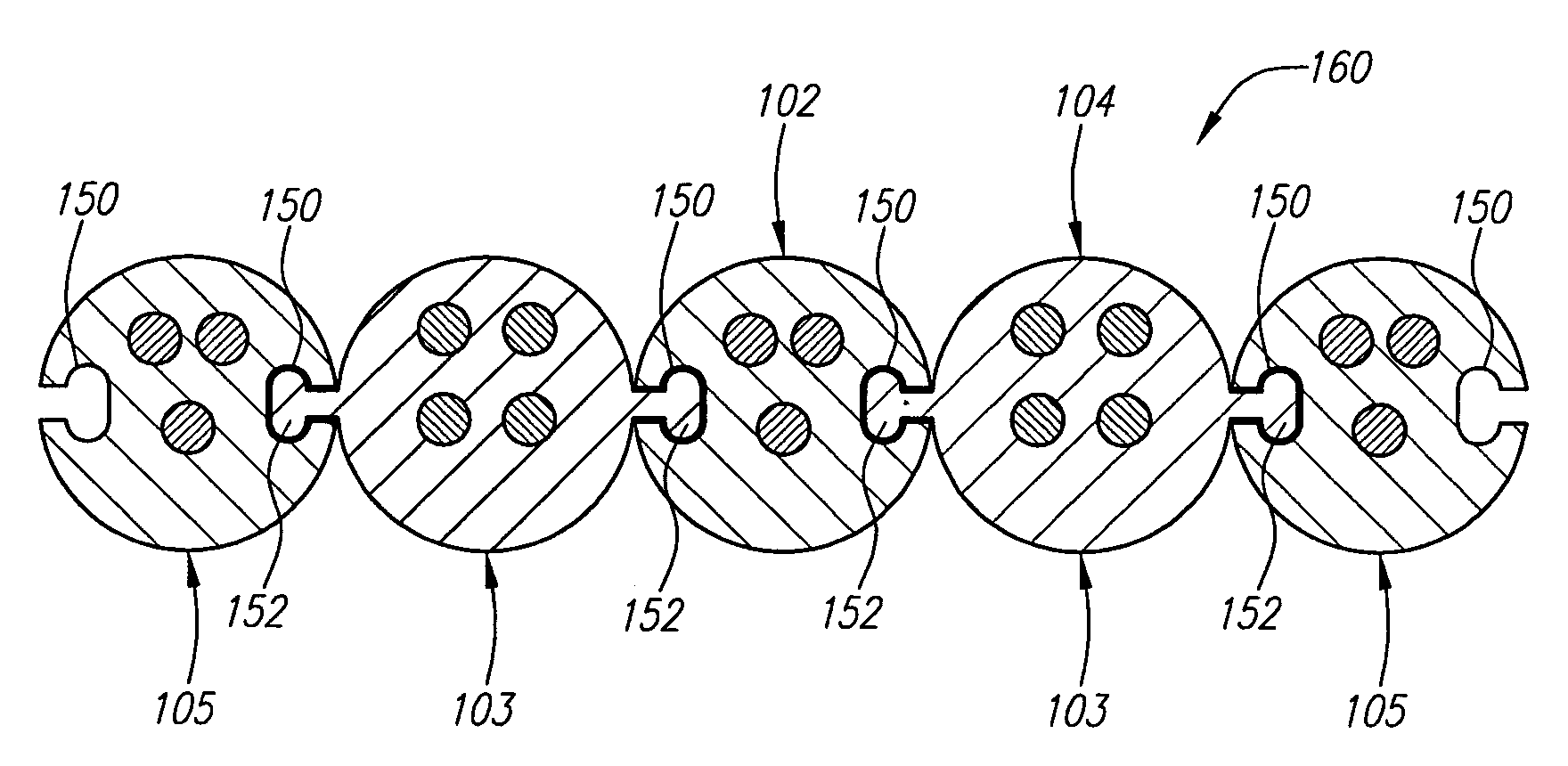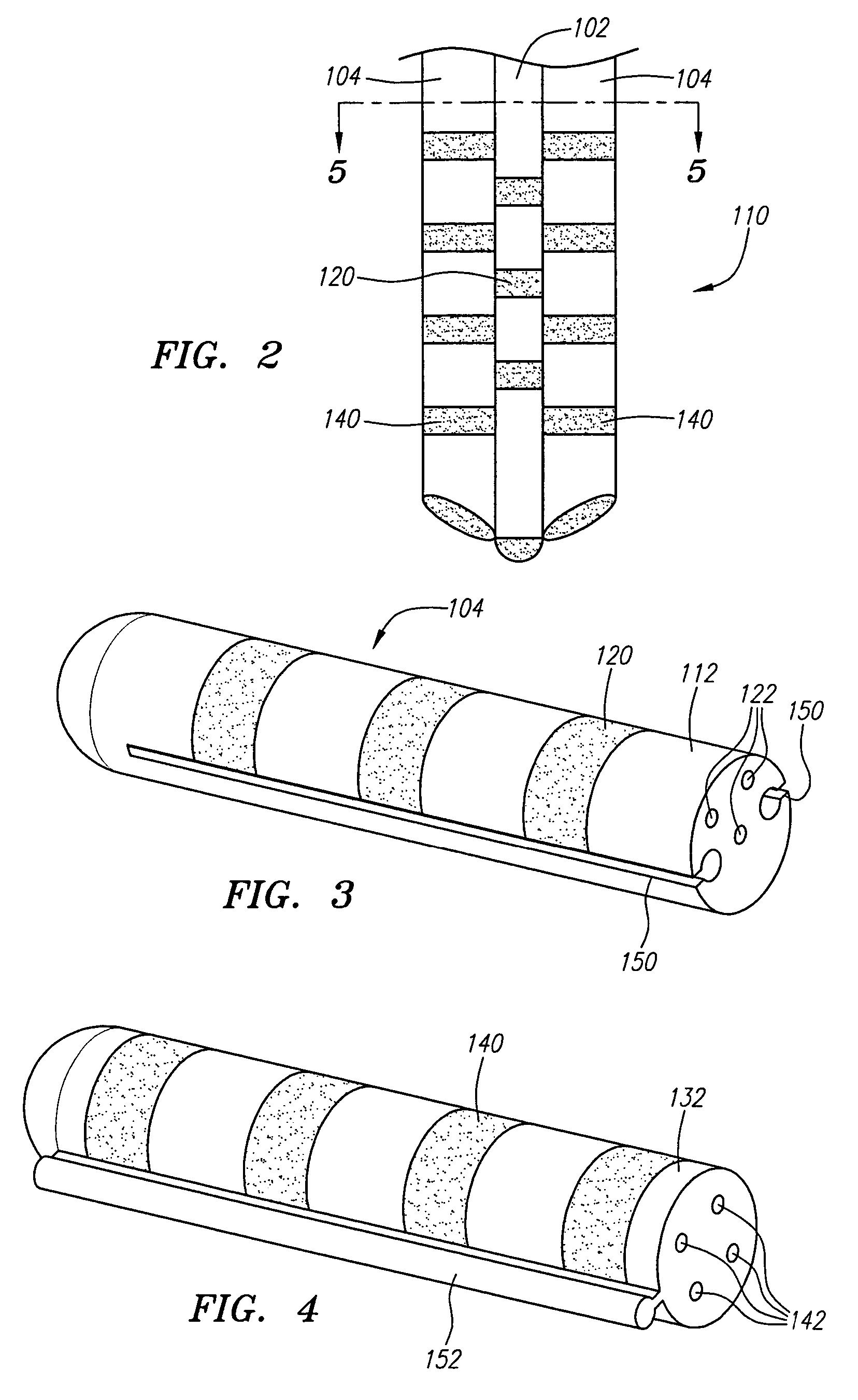Modular stimulation lead network
a module-based, lead-based technology, applied in the field of patient-specific implantation of stimulation leads, can solve problems such as lack of power efficiency, and achieve the effect of prolonging reli
- Summary
- Abstract
- Description
- Claims
- Application Information
AI Technical Summary
Benefits of technology
Problems solved by technology
Method used
Image
Examples
Embodiment Construction
[0052]Referring now to FIG. 1, a modular stimulation lead kit 100 arranged in accordance with one preferred embodiment of the present invention is shown. In its simplest form, the stimulation kit 100 generally comprises a primary stimulation lead 102 and two secondary stimulation leads 104, which are configured to be percutaneously delivered and implanted into the epidural space of a patient's spine, an implantable electrical stimulation source 106 configured for delivering stimulation energy to the stimulation leads 102 / 104, and an optional extension lead 108 configured for connecting the stimulation leads 102 / 104 to the remotely implanted stimulation source 106. As will be described in further detail below, the secondary stimulation leads 104 can be attached to the primary stimulation lead 102 to form a modularized stimulation lead assembly 110, as illustrated in FIG. 2.
[0053]It should be noted that although the kit 100 illustrated in FIG. 1 is described herein as being used in sp...
PUM
 Login to View More
Login to View More Abstract
Description
Claims
Application Information
 Login to View More
Login to View More - R&D
- Intellectual Property
- Life Sciences
- Materials
- Tech Scout
- Unparalleled Data Quality
- Higher Quality Content
- 60% Fewer Hallucinations
Browse by: Latest US Patents, China's latest patents, Technical Efficacy Thesaurus, Application Domain, Technology Topic, Popular Technical Reports.
© 2025 PatSnap. All rights reserved.Legal|Privacy policy|Modern Slavery Act Transparency Statement|Sitemap|About US| Contact US: help@patsnap.com



